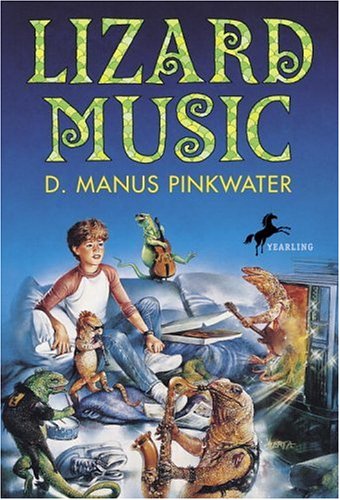We all loved Divya Srinivasan's authentic India-themed illustrations of our picture book, Cinnamon by Neil Gaiman. Long ago a Rajah and a Rani had a daughter, princess Cinnamon, who was not only blind, but also did not talk, and they offered a mango grove, a parrot, and a portrait of the Rani's aunt, once a raging beauty, to anyone who could teach their daughter to talk. All failed except for a ferocious tiger, who (amazingly!) could talk, and who taught Cinnamon about pain, fear, and love. It turned out that Cinnamon never talked because she had nothing to say, but learning about the world from the tiger made her want to go away with him "...for a while to further her education." We all loved that! Some of us loved the writing and the humor in the telling, others not so much; some felt the story was too dark, others remarked that most fairy tales have dark elements; some felt it was too simple or too fantastical. The written and illustrated details that made the story enjoyable are too numerous to mention here, but worth a look. We did feel it could be a good read aloud, and could be used with students alongside other traditional tales with similar motifs.
None of us were thrilled with the title of our novel, Those Kids from Fawn Creek by Erin Entrada Kelly, the story of a strange newcomer, Orchid, a seemingly ethereal girl, who arrives to join a very entrenched group of 12 seventh graders who have been together since kindergarten in Fawn Creek, a tiny Louisiana town. As Orchid begins to affect the long-held behaviors of the other kids via her positive attitude, everything seems to be thrown into turmoil. The story, told from many points of view, deals with several of the usual issues among kids of this age: cliques, 'mean girls,' crushes, friendship, gender roles, bullying, lying, etc. etc. etc. Some readers thought the different points of view as the story progressed were confusing, but others pointed out that the drawings at the beginning (as if on a yearbook page) made it easier to figure out who each kid was, and why each of their descriptions/actions/feelings made sense. Some thought that it would have been good to read Orchid's point of view also, but that never arose. Some thought it was a psychological study of kids' thinking/reactions at that age but not so thrilling to read. Others felt that young readers in the target group would certainly relate, and that it was a quick read, including moments of suspense, which kids would also like.





























